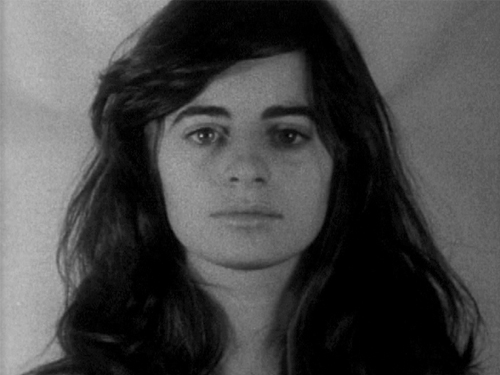
To the distant observer
They are chatting of the blossoms
Yet in spite of appearances
Deep in their hearts
They are thinking very different thoughts
Ki No Tsurayaki
A series of films selected by Zéro de conduite with a live soundtrack by Joachim Badenhorst
Joachim Badenhorst is one of the most fascinating musicians from the Belgian jazz and improvisation scene. Following his acclaimed first solo album The Jungle He Told Me, he just released a beautiful new solo album FOREST//MORI. On the occasion of this evening, entitled To the Distant Observer, Badenhorst will engage in a dialogue with a series of films selected by Zéro de conduite, films that deal with the vigour and fragility, the violence and tenderness of the gaze.
Film (Samuel Beckett & Alan Schneider, 1965)
“The greatest Irish film ever made!” – Gilles Deleuze
The only film by Samuel Beckett and the last film in which Buster Keaton appears. The crux of the film is the thought “esse est percipi” (“to be is to be perceived”) of the 18th century philosopher George Berkeley. Beckett himself said: “It’s a movie about the perceiving eye, about the perceived and the perceiver – two aspects of the same man. The perceiver desires like mad to perceive and the perceived tries desperately to hide. Then, in the end, one wins.”
Screen Tests (Andy Warhol, 1963-1964)
Screen Tests is a series of silent film portraits of Factory-habitués. Sustained 16mm-reels are played slowed down and in their entire length. The camera stares unvarnished and at the same time seductively at those portrayed and as in a dream they stare back. Films about the fragility of looking and to be looked at, about the power of the camera that never ceases to look, that never gets bored and never turns away its gaze, about mortality, transiency, and the banal yet mystical dimension of the human face.
New York, N.Y. (Raymond Depardon, 1986)
How to approach a colossal subject like New York City as a documentary filmmaker?
“I would seek cover amidst the throngs of people in the busy streets of these big metropolises. For a few hours, a few days, I was an inhabitant, a special kind of local. I remained a foreigner, but I was adopted and protected by the crowd. I have always liked being invisible, disappearing as soon as I’m noticed and slipping unobserved from one street to the next without trying to hide. I remained a tourist a little off the beaten track, full of curiosity, but always an amateur.”1
À propos de Nice (Jean Vigo & Boris Kaufman, 1930)
Jean Vigo’s debut film, photographed by Boris Kaufman. One could call this film a city symphony, but À propos de Nice resists any modernist celebration of the city. Vigo and Kaufman summoned the illustrative gestures and tropes of the city symphony – motion, machinery, work, sports and leisure – only to deflate or negate them.2
“And the goal will be attained if one succeeds in revealing the hidden reason behind a gesture, in extracting from a banal person chosen at random his interior beauty or caricature, if one succeeds in revealing the spirit of a collectivity through one of its purely physical manifestations. And all this with such force that from now on the world, which we, indifferent, have heretofore passed by, will be presented to us, in spite of itself, over and above its outward appearances. A social documentary should open our eyes.” – Jean Vigo3
In 2013 the documentary filmmakers Elias Grootaers, Olivia Rochette and Gerard-Jan Claes founded the production and distribution platform Zéro de conduite. The name is a reference to Jean Vigo’s eponymous film made in 1933, a lyrical ode to youthful rebellion.
- 1Raymond Depardon, “The Picture Thief”.
- 2After “À propos de Jean and Boris”.
- 3“Toward a Social Cinema”.

